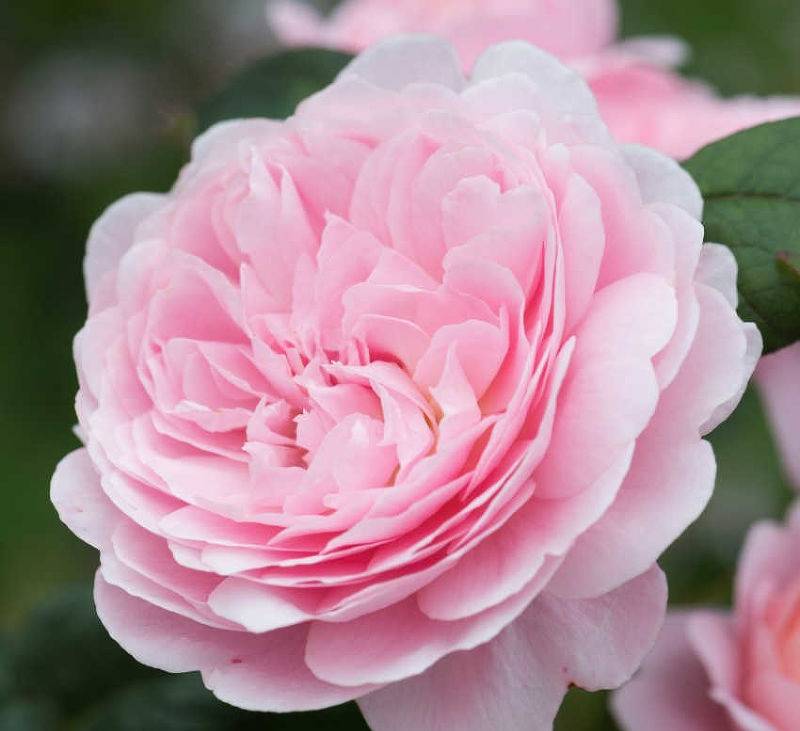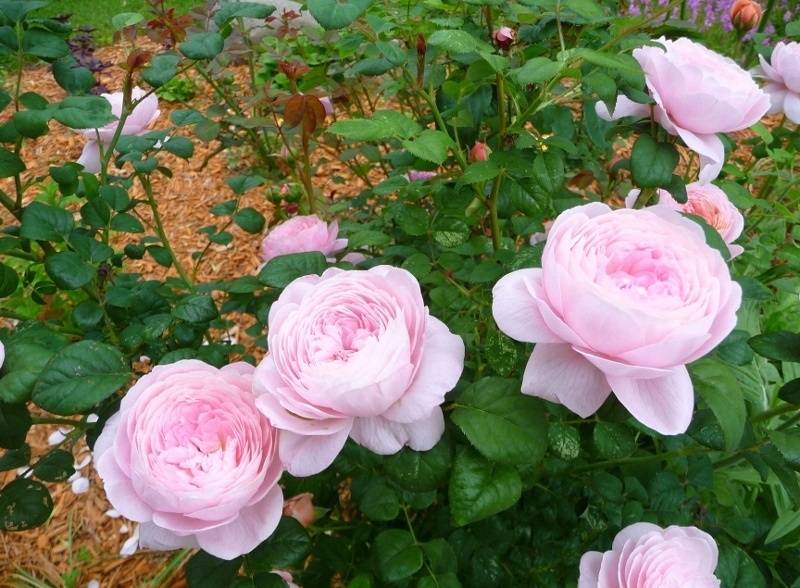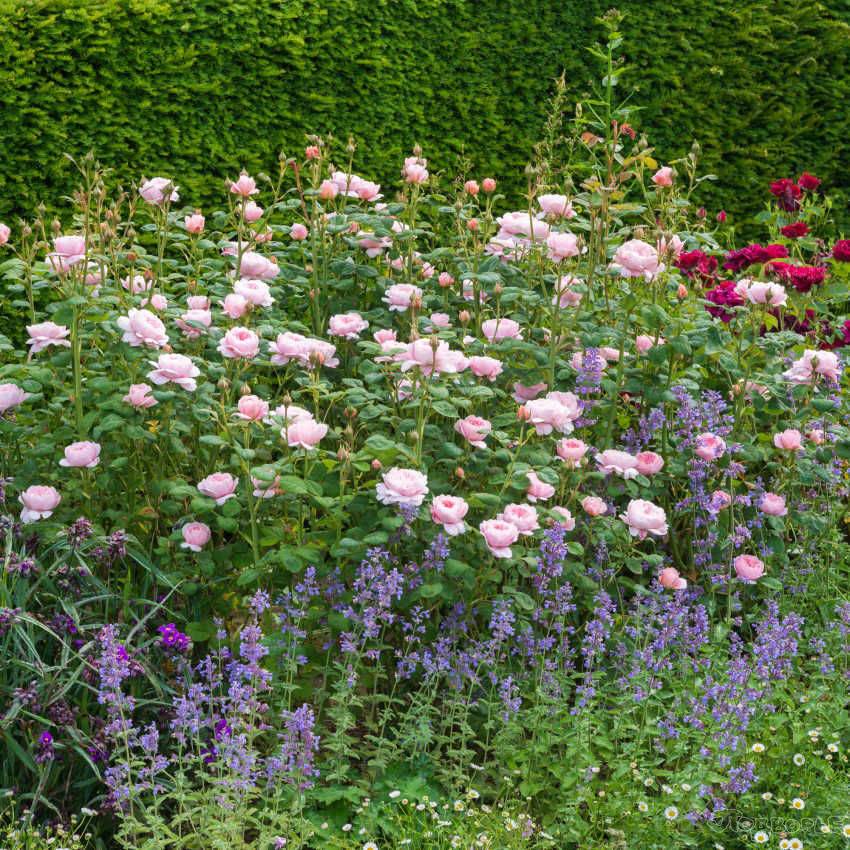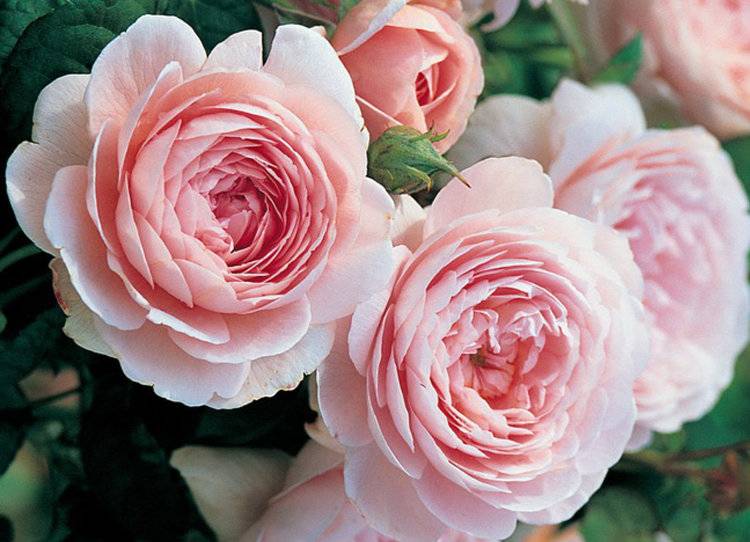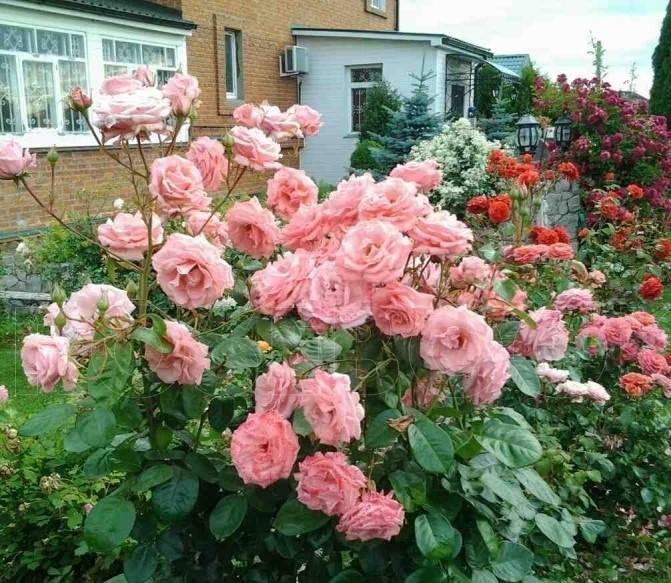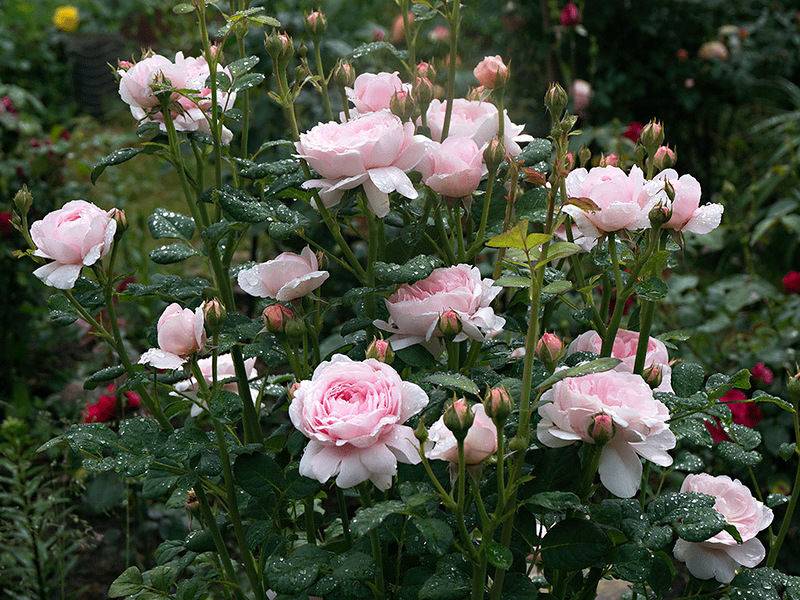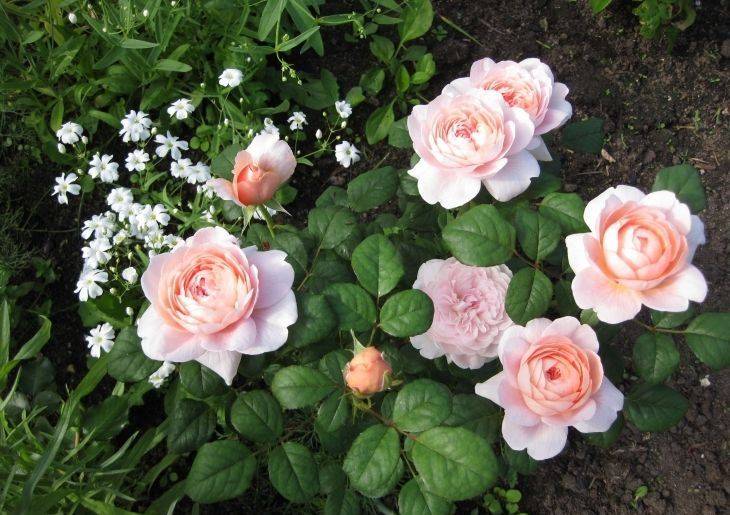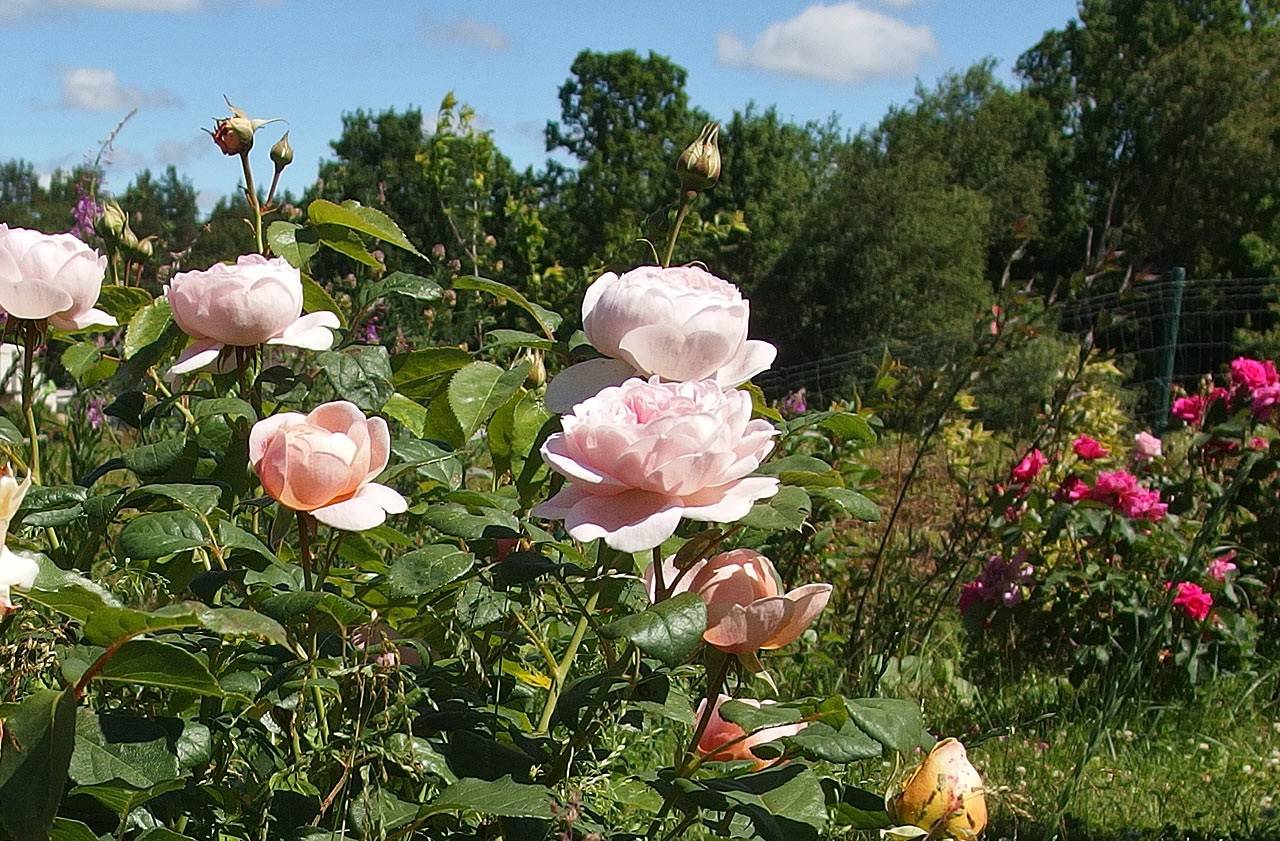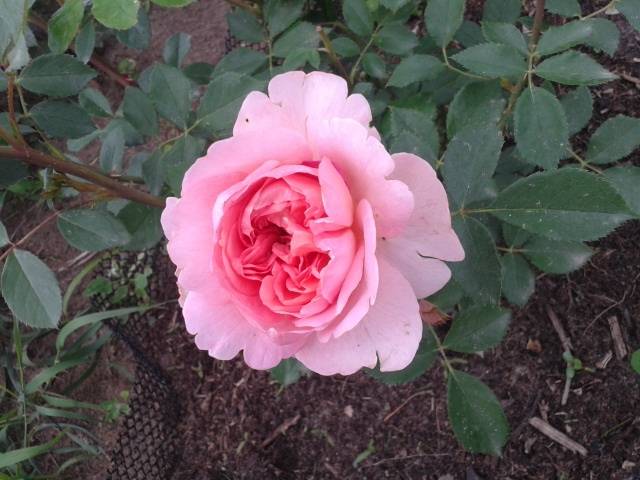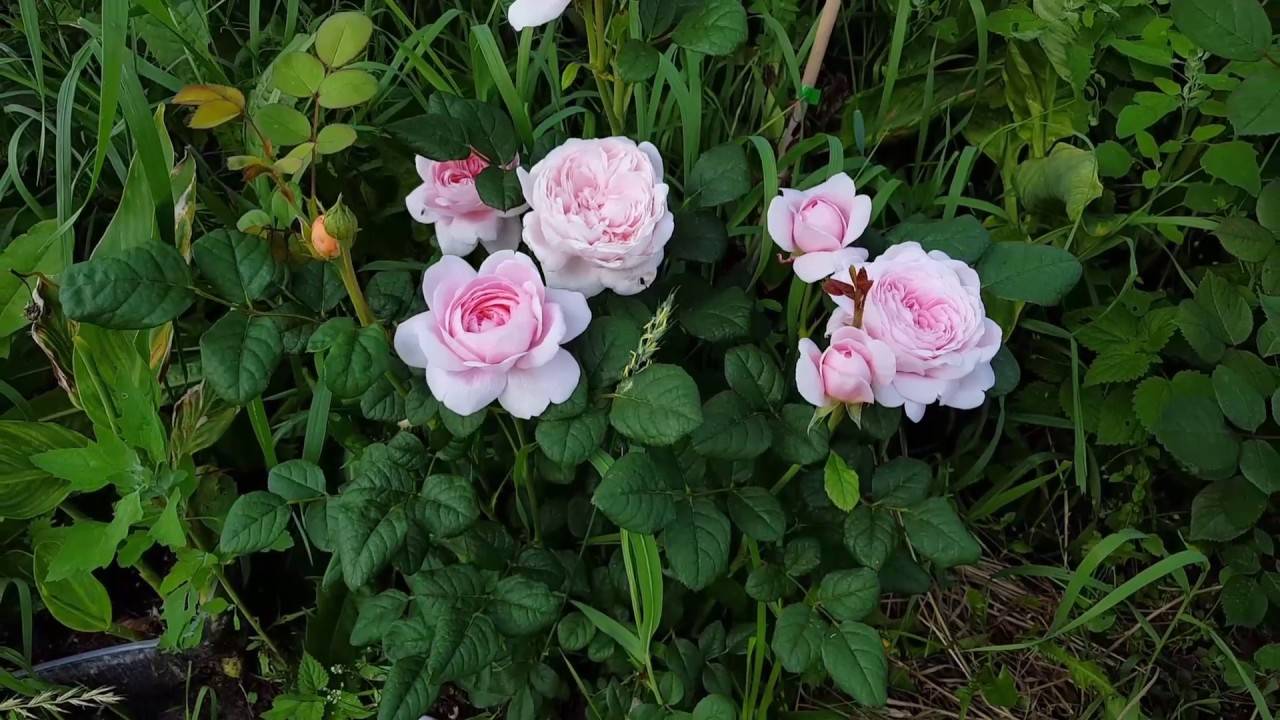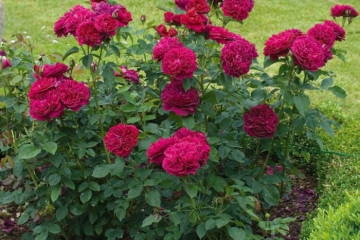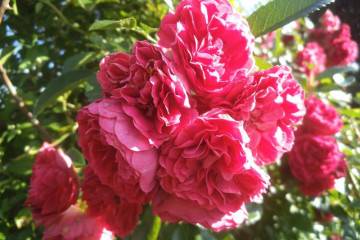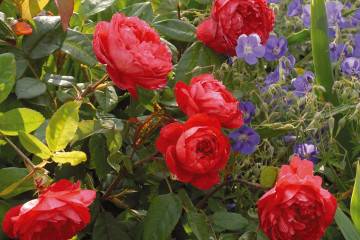Rose Queen of Sviden (Queen of Sweden) - variety description
Content:
Rose Queen of Sweeden is one of the youngest varieties of this flower. He quickly gained popularity with flower growers. The delicate pink petals of these terry flowers look elegant and luxurious.
Rose Queen of Sviden (Queen of Sweden) - what is this variety
The English rose Queen of Sweden is named after the Swedish queen Christina. The history of the name of this variety is very interesting and is associated with the events of the 17th century. Queen Christina of Sweden signed an agreement on trade and cooperation with Great Britain under the direction of O. Cromwell. This agreement helped to strengthen relations between the countries.
Other names for this variety are Queen of Sweden Christina or Queen of Schweden rose. It belongs to musk roses, as well as to the group of scrubs.
Brief description and characteristics
Rose Queen of Schweden is suitable for growing in temperate and harsh continental climates. They love to grow it in Central Russia, the Urals, Siberia, the Far East, as well as in the Scandinavian countries and Northern Europe.
The description of the Swedish Queen will interest novice gardeners. The large bush grows 80 cm wide. The height of its shoots is 110–120 cm. The straight, solid stems are covered with sharp thorns, which are hidden behind small emerald green leaves. The rose bush branches actively and always looks neat.
Terry flowers consist of 30–35 satin petals of light pink or apricot shades. The blossoming buds are shaped like a bowl. Their diameter rarely exceeds 7–7.5 cm.
Advantages and disadvantages of the variety
Queen of Sweeden is truly a royal flower. Many florists dream of growing it.
Queen of Sweden advantages:
- beautiful appearance;
- delicate aroma;
- flowering continues continuously throughout the summer;
- excellent frost resistance.
Disadvantages:
- hard to tolerate excess moisture, dampness and rainy weather;
- pruning the bush is difficult because its branches are studded with thorns.
Use in landscape design
Rose Queen of Sveden is widely used in landscape design. It is very easy to grow a hedge from it. This flower will be able to braid a fence, gazebo or terrace. The Queen of Sweden looks graceful in single plantings or in combination with other varieties of roses. She is often included in various compositions.
Growing a flower: how to plant it in open ground
Unlike many other plants, planting the Queen of Reduced variety in open ground requires a long preparation. The planting site must be dug up in the fall in order to grow a young bush on it next spring.
It is necessary to root seedlings in the soil. They are sold in specialty stores and nurseries. Cuttings cut from an adult rose bush can be used as seedlings.
What time is the boarding
Like other musk roses, Queen of Sweden can be planted in spring, summer and fall. Spring and summer plantings are most favorable for the plant. It is advisable to plant seedlings with an open root system in the summer. Planting plants with a closed root system (in pots, flowerpots, etc.) can be postponed until autumn or spring.
Autumn planting requires special attention and responsible attitude, which is carried out strictly 14 days before frost. If you do this earlier, the bush may bloom, and then in winter it will die. If you delay the cultivation, the first frosts will destroy the young seedling.
Seat selection
A flower bed for Queen of Sveden must be reliably protected from gusts of wind, drafts and direct burning sunlight. In addition, the rose needs an abundance of light, so you need to choose a place that is well lit by the sun.
Barren or damp swampy soil will ruin the rose. Places where groundwater is close to the surface are not suitable for it. She needs good drainage. The soil should be loose and fertile.
How to prepare the soil and flower for planting
Only seedlings with an open root system will need special pre-planting treatment. They need to be put in water for 12-24 hours. It is advisable to mix in it a growth stimulant that strengthens the roots.
The soil is prepared from several components:
- leafy land;
- humus;
- turf;
- peat;
- sand.
Planting procedure step by step
How to plant a Queen of Sviden rose in a summer cottage:
- Dig a hole 60x60 cm wide and deep.
- Put drainage on its bottom (expanded clay, pieces of brick, crushed stone, pebbles).
- Pour peat on top.
- Place the seedling in the hole and sprinkle with soil.
- Compact and then water the soil.
- Put a wooden post to support the future bush. You can tie the plant to the post in advance.
Plant care
Caring for a rose with sharp thorns is not easy, but this work will be rewarded a hundredfold.
Watering rules and humidity
Queen of Sweden is watered 2-3 times a week. For irrigation, use warm water warmed by the daytime sun. You need to pour it at the root so as not to splatter the flowers and leaves. During heat and drought, you need to water the plant every day. In the evening, it is allowed to occasionally pamper a rose with a shower, its leaves are sprayed with water from a spray bottle.
Top dressing and soil quality
Immediately after the ground thaws after winter, it needs to be fed with nitrogenous fertilizers. They are useful for the growth of the green part of the plant (stem and foliage). In the future, the soil is enriched with potash-phosphorus and organic fertilizers.
Queen of Schweden needs feeding every 2-3 weeks. A month before the first frost, the last fertilizers are applied to the soil.
The earth needs to be loosened weekly so that the roots of the flower do not lose air.
Pruning and replanting
In the spring, the rose bush is pruned and shaped. First, the damaged branches are removed, and then the plant is trimmed, giving it a beautiful shape.
Queen of Schweden has a very hard time tolerating a transplant, so this method is rarely used. When a rose is propagated by dividing the bush, a transplant is necessary.
Features of wintering a flower
In preparation for wintering, this flower does not need to be pruned, unlike most other varieties of roses. Its branches must be carefully bent to the ground and covered with a dense bag of insulation on top.
Blooming rose
Queen of Sweden blooms magnificently, profusely, like a king. She decorates parks and gardens throughout the summer.
A period of activity and rest
The rose of this variety blooms in waves: it begins in June and blooms until mid-July, then rests for a week and blooms again until September. Thus, the flowering is continuous.
Care during and after flowering
During the summer months, the rose bush must be carefully examined every day and faded petals and buds must be removed from it. At this time, you can cut flowers for bouquets. In addition, an attentive florist will strictly adhere to the watering and feeding regime.
What to do if it does not bloom
The absence of flowering buds suggests that the rose bush has not been fed for a long time. In addition, the rose ceases to bloom in a too shaded place. If the reason is a lack of light, the bush must be carefully transplanted to a more sunny area.
Flower propagation
All musk varieties, including Queen of Schweden, multiply in three ways:
- cuttings;
- dividing the bush;
- vaccination.
Division of the bush:
- The roots are freed from the earth and straightened.
- The root system is carefully cut into 2 parts.
- Places of cuts are treated with activated or charcoal.
Graft:
- On an adult healthy bush, a small cut is made and a rose stalk is inserted there.
- All parts of the plant are treated with garden pitch.
- Tie the handle with a soft rope.
Cuttings:
- The young shoot is cut into short cuttings.
- They are placed in the ground and covered with a bottle.
- After 2-3 weeks, the cutting will take root.
- In August, they can be transplanted to a permanent place.
Diseases, pests and ways to control them
Queen of Sweden has weak immunity against diseases and pests, so it must be treated with insecticides and antifungal drugs. You will need Bordeaux liquid, copper sulfate and chemicals.
Diseases and parasites cause great harm:
- aphid;
- shield;
- leaflet;
- powdery mildew;
- rust.
Most roses grow in warm southern climates, but there are some varieties dedicated to northern regions. Hardy and frost-resistant rose Queen of Sveden will give the garden a lush bloom and delicate aroma.
